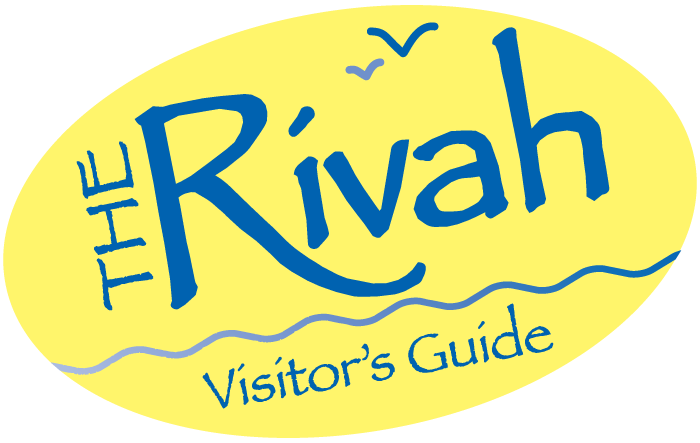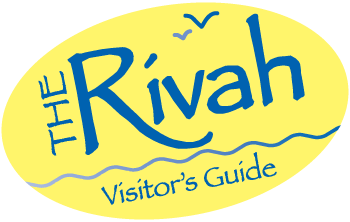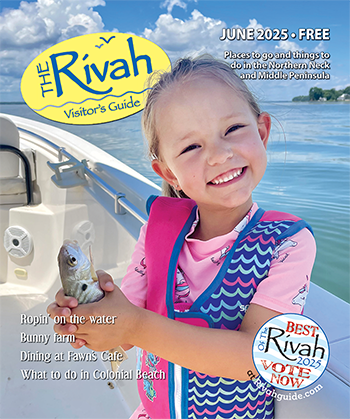by Larry Chowning –
One of the great fish of Chesapeake Bay is the prehistoric Atlantic sturgeon. Considered a “living fossil,” the fish are caught in muddy, deep river holes in brackish waters of the Rappahannock, Potomac, York and James rivers.
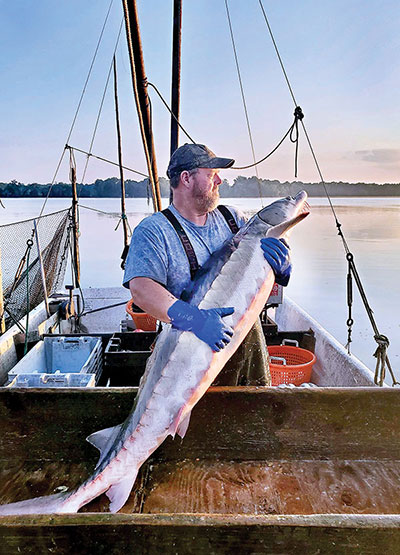
The fish survived from the Paleozoic age and in 130 million years there have been a lot of environmental factors that have killed many species, but the Atlantic sturgeon is still here. However, after centuries of overfishing and environmental decline of the bay by the 1990s, man and nature had just about brought the prehistoric fish to extinction.
The sturgeon population appears, however, to be rebounding. Pound net and gillnet fisherman Wayne Fisher and his sons Aaron and Matthew Fisher of Leedstown on the Rappahannock River have seen more sturgeon in their nets this past spring than they have seen in the 30-plus years Wayne has been working the water.
“We catch most of the sturgeon in March and again in the fall,” Wayne Fisher said. “During hot weather I think the fish go down in the mud in deep water and do not come up until the water cools down.
“I’ve worked the Potomac, James and Rappahannock rivers for over 30 years and we caught more sturgeon this year on the Rappahannock than ever before. Some weeks we were catching six fish a day, which is unheard of.”
“There is one fish that we recognized several times because of a scar on its back,” he said. “We caught that same fish three times over the season, so we could have been catching some of the other fish that we were catching earlier too.”
Wayne Fisher said he believes that the comeback of the sturgeon is strongly tied to the overall healthier Chesapeake Bay and so do many scientists on the bay. They believe the Clean Water Act of 1972 and the first Chesapeake Bay Agreement in 1983 led to broad cleanup programs and are restoring health to the bay’s rivers.
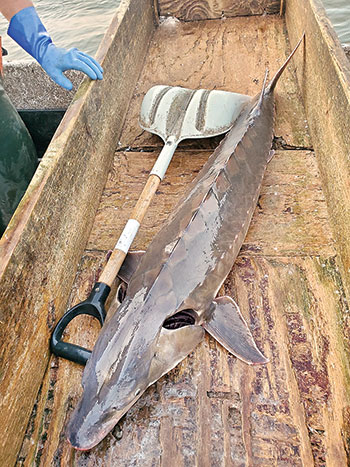
Prior to the 1990s, it was believed the sturgeon population was all but gone from the bay. However, scientists and officials from the U.S. Fish and Wildlife Service and the Virginia Institute of Marine Science (VIMS) were hearing otherwise from commercial fishermen in the James, Rappahannock and York rivers who were landing a few sturgeon here and there.
In 1997, Albert J. Spells of the Fish and Wildlife Service set up a program offering cash rewards to anyone reporting landings and in no time had 300 confirmed reports. But scientists who attempted to catch sturgeon met with little success.
In 2005, Chris Hager, a fisheries bycatch specialist with the Sea Grant Marine Advisory Program at VIMS, began working with watermen Kelly Place, George Trice and Jimmy Moore on designs for nets that caught rockfish but avoided sturgeon.
Place wrote a grant and was awarded funding through the Virginia Sea Grant Program to tag, record the catch and pass data along to fishery managers. This brought attention to the number of sturgeon that were in the James River as they caught and tagged 600 sturgeon in the first two years of the program.
It also helped scientists understand where the sturgeon were in the James River. Burwell’s Bay, Cobham Bay and the channels in-between were where many of the fish were located. Trice and Moore knew the good spots to find sturgeon.
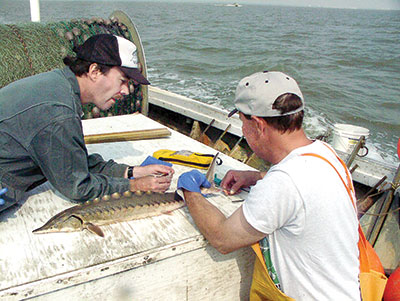
This led to others coming to the rescue of the sturgeon. Chuck Fredericton and Matt Balazik were two Hopewell volunteers who worked in a program known as Hopewell’s Volunteer Sturgeon Resurgence Committee.
Balazik went on to earn a doctoral degree in fisheries from Virginia Commonwealth University’s (VCU) Rice River Center and would eventually get involved with Spells in the tagging program. Through that program, Balazik handled fish and eventually determined which fish were spawning. Sturgeon spawn in fresh water and in 2018 Balazik and others were able to identify sturgeon larvae after being caught in plankton nets.
The VCU Rice River Center in Charles City county is now home to the Virginia Sturgeon Restoration Team, a group dedicated to restore the Atlantic sturgeon to it native and historical stature within state waters.
Waterman Wayne Fisher praises the research and work that is currently taking place with the sturgeon. “I enjoy seeing these fish,” he said. “When they come to the surface it is like looking back millions of years and seeing life as it was,” he said.
“I am also happy that the rivers and streams are being cleaned up,” said Fisher. “I know we have a long way to go to make it alright again but the comeback of the sturgeon is one small indication that we might be heading in the right direction.”
In colonial-era through 1800s,
sturgeon were a popular catch
Atlantic sturgeon was the preferred fish of the first English settlers at Jamestown. Sometime before 1612, when tobacco became the money crop of the Southern colony, sturgeon eggs (caviar) were salted down and shipped to the nobility in England in an attempt to establish a viable market. The English nobility, however, did not take to the taste of salty fish eggs.
In the colonies, however, sturgeon was highly targeted as a domestic food source. Reports from colonial-era fishermen likely exaggerated about being able to walk across the water on the backs of sturgeon, but obviously there was a strong sturgeon population when the first settlers arrived.
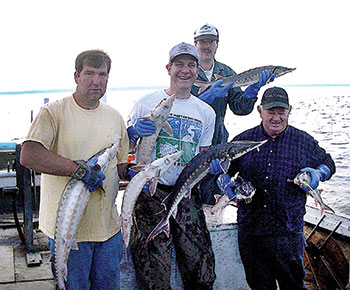
The last viable sturgeon fishery on the Chesapeake Bay was in the late 1800s, when commercial fishermen were harvesting between 600,000 and 1 million pounds of sturgeon annually from Virginia waters.
An 1887 fish report stated, “sturgeon were harvested on the York River in float seines (gillnets that floated with the tide) and were shipped to market by railroad … to Richmond and were known there as “Charles City Bacon.”
The report went on to say that 108,000 sturgeon were caught on the James River that year, 288,000 on the Potomac and 17,700 on the Rappahannock.
In the 1880s, landings on the east coast were as high as 7 million pounds per year, but after 1900 the population crashed. By 1928, there was concern that the fish would soon be gone forever and a four-foot minimum-size limit was placed on the fish. By 1974, the harvesting of sturgeon was banned throughout most east coast states.
Sturgeon was useful other than as food. Its skin could be worked into leather for clothing and bookbinding and its swim bladder was used to make a semitransparent pure gelatin called isinglass, a clarifying agent for jellies, wine, beer and glue. It was also used to make windows in horse-drawn carriages.
